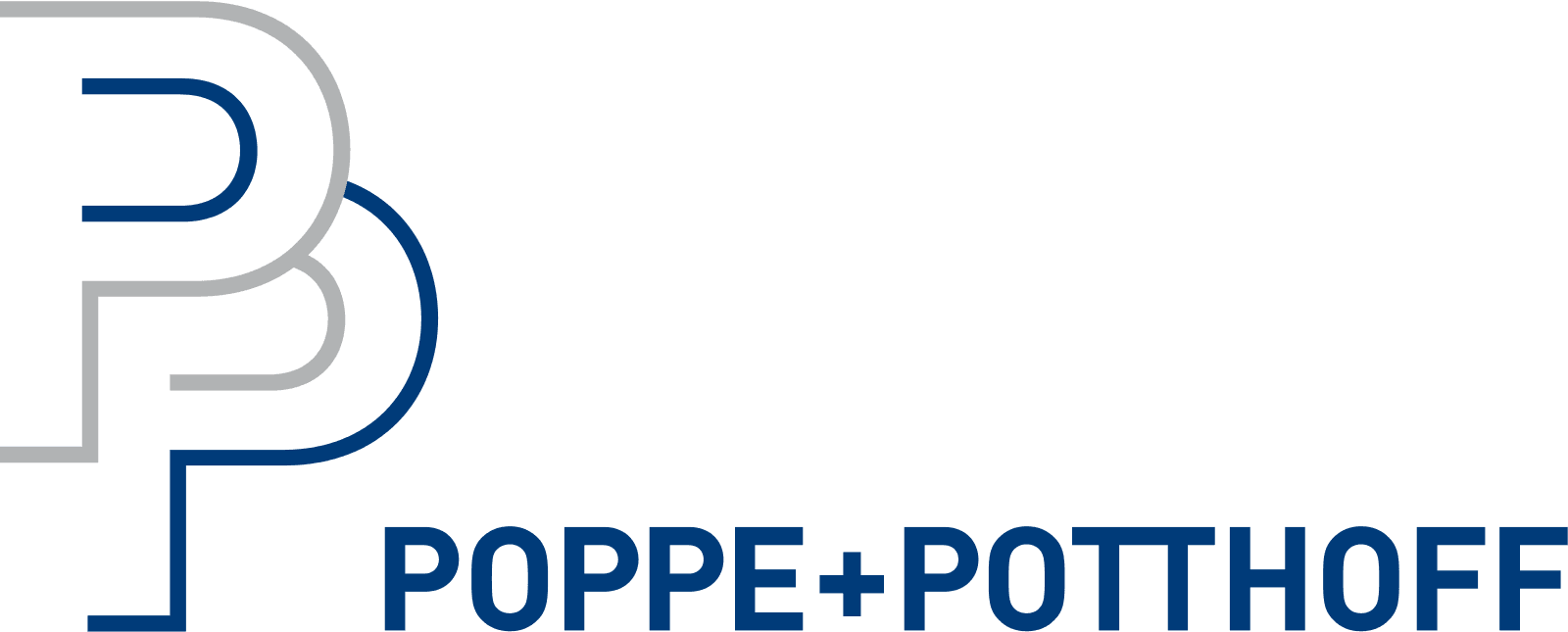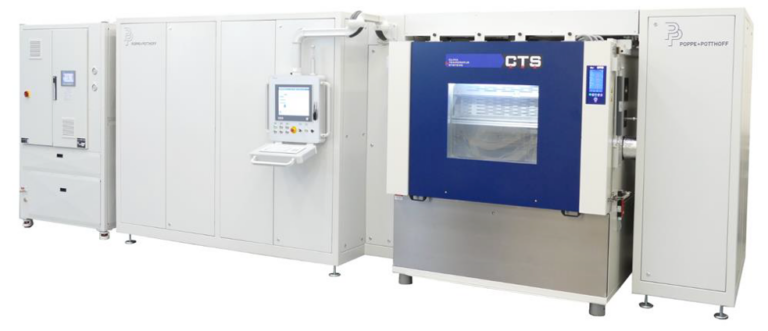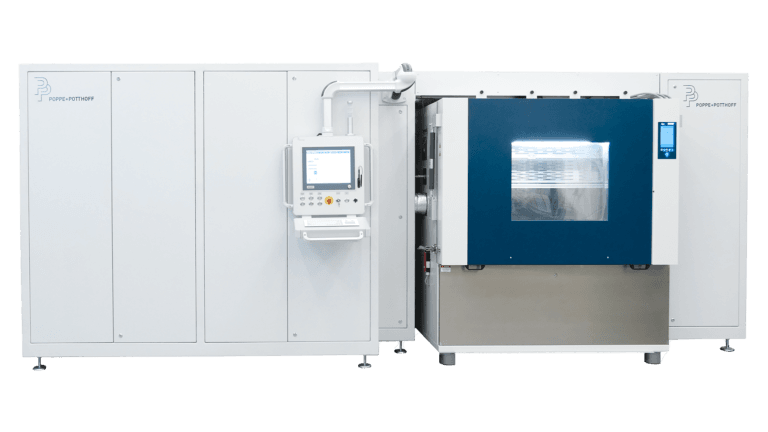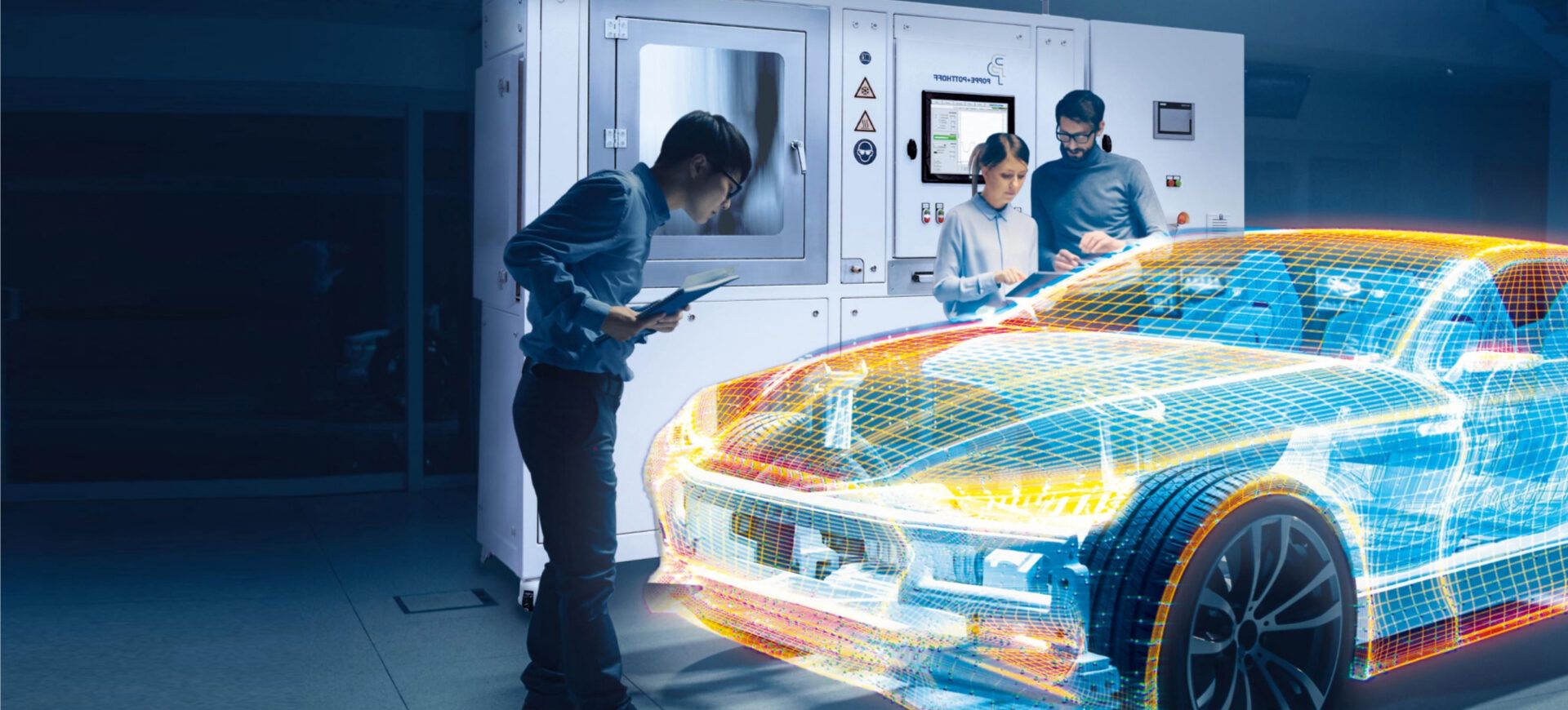
Pressure Test Stands
for EV Components
The Automotive industry is going through a transition. Consequentially automotive testing is evolving to different pressure testing requirements. For example, high-pressure components such as diesel injection lines, common rails, pump heads, and other combustion engine components are less frequented due to the shift to electronic vehicles.
Generally, investments are moving towards R&D and the production of electronic vehicle components. However, EVs require other sets of components to be tested at lower pressures. Typical components to be pressure tested are ECUs and their cooling circuits or cooling plates, radiators, plastic components, heat exchangers, AC/DC converters, water heaters, and various other pressure vessels.
Predominant test standards are GMW14193, VW8000, MBN 10306, GS 95024-3 M-07 for pressure alteration test on cooling circuit and radiators.
Liquid Cooling Burst- and Pressure Cycle Test Rig
Poppe + Potthoff Maschinenbau leads in burst and pressure pulsation testing for liquid cooling components like coolant distribution racks, manifolds, and CPU/GPU cold plates. Our rigorous testing ensures these components can withstand extreme pressure fluctuations, with burst pressures up to 70 bar (1100 psi) and pressure cycle testing at up to 20 bar (290 psi) using PG25 coolant. We utilize both wave and square pressure curves at frequencies up to 2 Hz, providing a comprehensive simulation of operational conditions. Additionally, our testing of passive cold plates, which rely on external Coolant Distribution Units (CDUs), further guarantees system reliability by mitigating internal pump failure risks.
Burst Test Stand up to 200 bar
In order to prove the quality of media-carrying components, hoses, lines, pipes and many other pressure vessels are pressurized until they burst. Accordingly, our standard pressure test bench can be equipped with a simple pump solution or a high-tech hydraulic intensifier to adjust to your needs.
Battery Simulation under the Influence of Temperature
A temperature-controlled volume flow (e.g. 50 l/min) is generated to function test media-carrying components. Further, components such as air conditioning units, ECU or cooling circuits can be energized to simulate operability while simulating effects on battery performance.
Pressure Cycle Test Bench with Over- and Under Pressure
Expose cooling systems of ECUs, PTC heaters, high-voltage coolant heaters, AC/DC, DC/DC converters, coolant circuits and other media-carrying components to pulsating pressures, as well as a vacuum test. In addition, the rig enables ambient and fluid temperature heating and cooling at temperatures from -40 °C to 160 °C. A typical test fluid is a water-glycol emulsion.
Thermal Management
And Cooling Circuits
Cooling and heating systems are essential for electromobility. They protect electronic components from overheating while also ensuring interior comfort in a vehicle. In order to validate cooling circuits, components are put to the test under changing pressure cycles and temperature conditions. The performance and power consumption of the systems must be studied in realistic service life conditions. While testing for durability and fatigue strength it is important to identify if the electronic component limits the vehicle range.
Mobility requires reliable thermal management so that people and machines – whether electric or combustion engines – can adapt to varying environmental conditions on land, on water and in the air. At the same time, air conditioning systems and all their components have to withstand high load changes over the long term. Instead of testing the resilience with specially developed test setups or in real operation, manufacturers can now put their components to the test with the help of pressure cycle and function test benches from Poppe + Potthoff Maschinenbau. Even at an early stage of development and during series production, the repeatable and precise tests enable products to be optimized flexibly and economically.
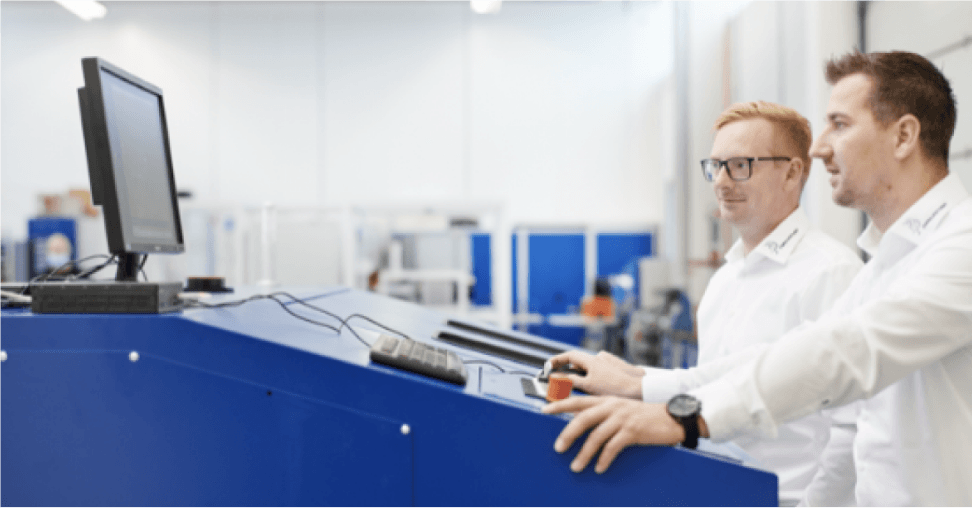
Contact Us
Our experienced technical sales team will help you with the implementation of your project and will find a solution tailored to your specifications and your requirements. We are represented internationally and can support you and your company worldwide. Our team has completed hundreds of projects many of which involved supporting test facilities with identical equipment. P+P Maschinenbau is your internationally trusted partner.

